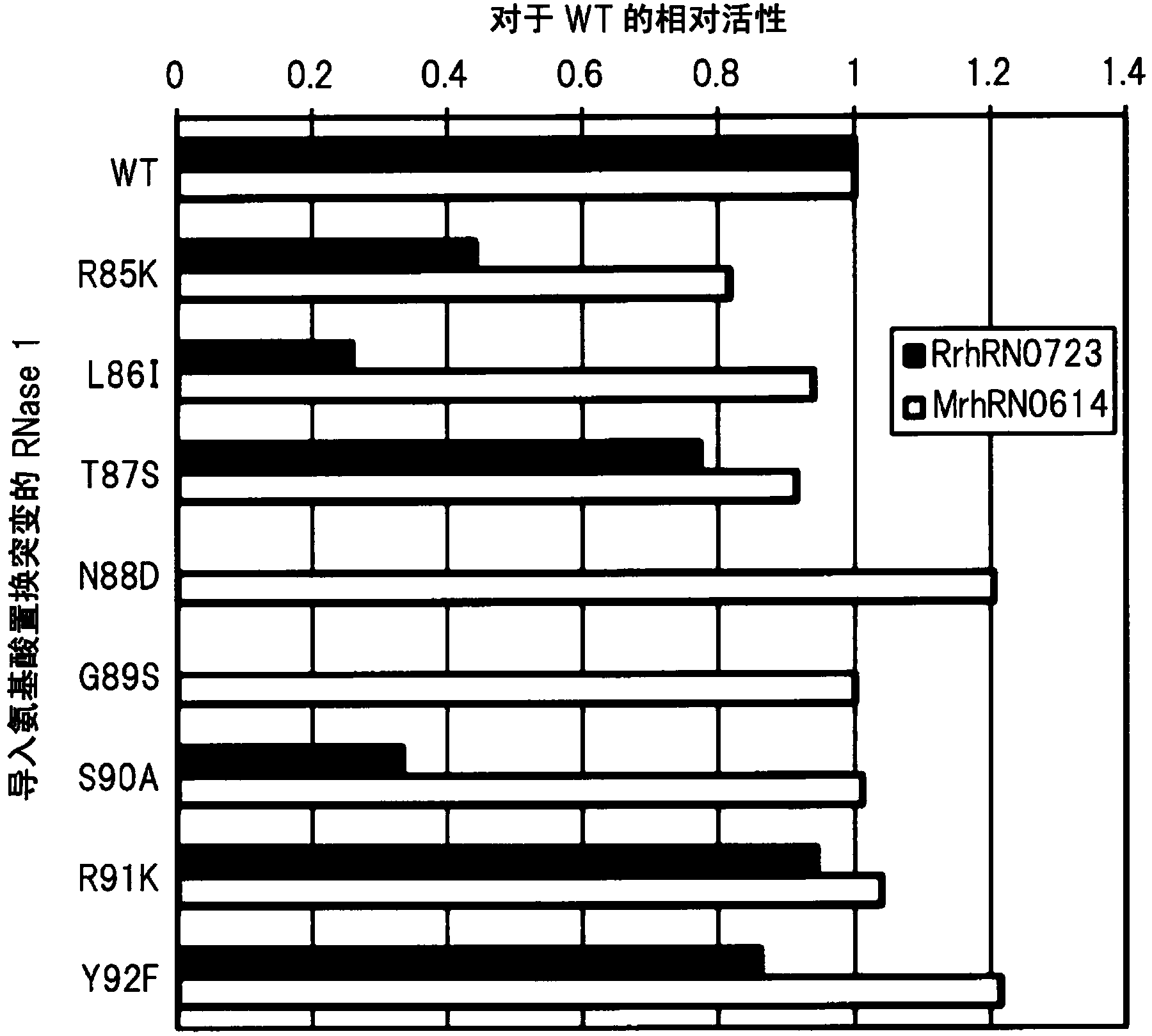Method for detecting cancer, and antibody capable of recognizing pancreas-specific ribonuclease 1
A ribonuclease and detection method technology, applied in the field of ribonuclease 1 antibody, can solve the problems of low organ specificity and uncertain diagnosis
- Summary
- Abstract
- Description
- Claims
- Application Information
AI Technical Summary
Problems solved by technology
Method used
Image
Examples
Embodiment 1
[0075] The preparation of embodiment 1 antibody
[0076] Modulation of the immunogen
[0077] In order to obtain the full-length polypeptide comprising human pancreas-specific RNase 1, insert the gene sequence encoding mature human pancreas-specific RNase 1 (SEQ ID NO. 2) into a plasmid vector expressible in insect cells, thereby preparing the expression plasmid. Specifically, a vector encoding a human immunoglobulin kappa chain (kappa chain) was inserted sequentially from the 5' upstream side at the multiple cloning site of pIZ / V5His vector (Life Technologies Japan Ltd.), a plasmid for recombinant protein expression in insect cells. In the gene sequence, gene sequence encoding His tag, gene sequence encoding FLAG tag, gene sequence encoding human pancreas-specific RNase 1 (SEQ ID NO: 1), the 1st to 28th amino acids corresponding to the signal peptide were removed The gene region of 84 nucleic acid residues (SEQ ID NO: 2). For the prepared expression plasmid pIZ-KFH-hRNase ...
Embodiment 2
[0086] Specificity determination of embodiment 2 antibody
[0087] Modulation of recombinant human pancreas-specific RNase 1 using a mammalian expression system
[0088]In order to obtain the full-length polypeptide comprising human pancreas-specific RNase 1 in mammalian cells, the gene sequence encoding human pancreas-specific RNase 1 was inserted into the pcDNA3.1-mycHis vector (Life Technologies Japan Ltd.) ( SEQ ID NO: 2), preparing the expression vector. More specifically, the gene sequence encoding the recombinant protein of the insect cell expression plasmid (pIZ-KFH-hRNase 1) prepared for immunogen preparation was inserted into pcDNA3.1-mycHis by molecular biology techniques vector (Life Technologies Japan Ltd.), thereby preparing pcDNA-KFH-hRNase 1. For the prepared mammalian cells, the recombinant human pancreas-specific RNase 1 was confirmed to be secreted into the culture medium with the expression plasmid; the recombinant human pancreas-specific RNase 1 was deri...
Embodiment 3
[0107] Embodiment 3 utilizes sandwich method ELISA to carry out the determination of human serum subject
[0108] A biological sample was used as a sample to perform measurement by the following sandwich method ELISA.
[0109] Measurement of the site to which the N-type sugar chain is not bound among the sites capable of N-type sugar chain modification of pancreas-specific RNase 1 in a biological sample derived from a pancreatic cancer patient.
[0110] In order to measure the portion of pancreas-specific RNase 1 capable of undergoing N-type sugar chain modification in a human biological sample that does not bind to an N-type sugar chain, prepare: healthy human serum (40 subjects), Pancreatic cancer patient serum (50 subjects, BioTheme Company), pancreatic disease patient serum (non-cancerous, 12 subjects, BioTheme Company), breast cancer patient serum (20 subjects BioTheme Company), benign breast tumor Patient serum (18 subjects), prostate cancer patient serum (24 subjects, ...
PUM
| Property | Measurement | Unit |
|---|---|---|
| Sensitivity | aaaaa | aaaaa |
Abstract
Description
Claims
Application Information
 Login to View More
Login to View More - R&D
- Intellectual Property
- Life Sciences
- Materials
- Tech Scout
- Unparalleled Data Quality
- Higher Quality Content
- 60% Fewer Hallucinations
Browse by: Latest US Patents, China's latest patents, Technical Efficacy Thesaurus, Application Domain, Technology Topic, Popular Technical Reports.
© 2025 PatSnap. All rights reserved.Legal|Privacy policy|Modern Slavery Act Transparency Statement|Sitemap|About US| Contact US: help@patsnap.com



